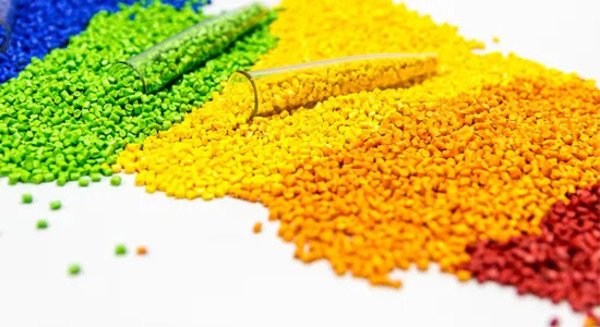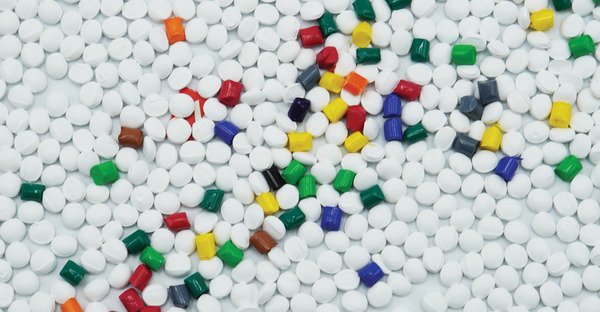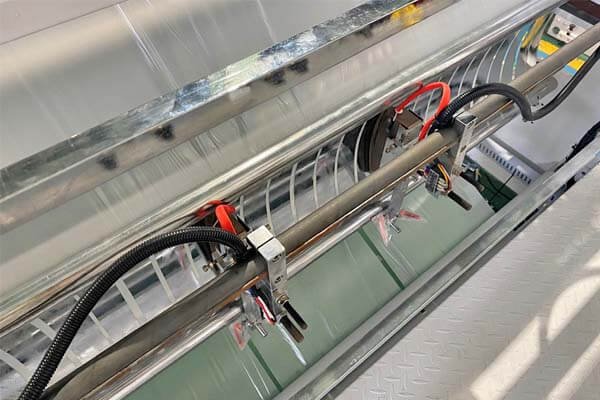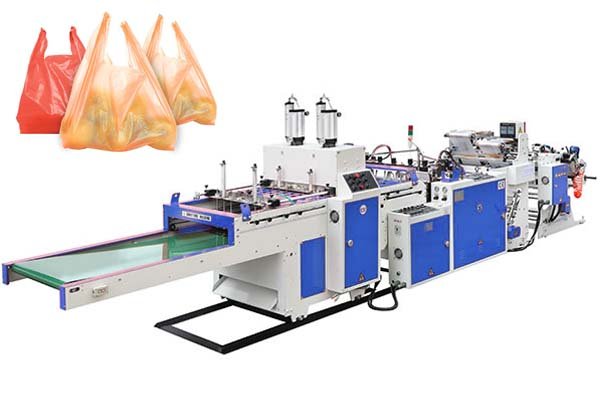
Changing the color of a plastic bag using standard dyes is difficult and often ineffective. This is due to the nature of plastic, which resists water-based dyes. This article explains why dyeing plastic bags at home rarely works and outlines the industrial method1 used to achieve consistent and permanent coloration.
Plastic bags can be tinted using specialized synthetic dyes, but results are typically uneven and short-lived. In industrial settings, color is introduced through masterbatch2—concentrated color pellets mixed with raw plastic resin before the bag is manufactured.
Plastic is non-porous and hydrophobic, meaning it repels water. Because of this, most common dyes, which are water-based, cannot penetrate the material. Some synthetic dyes3, like disperse dyes, may lightly stain the surface, but the bond is weak, leading to blotchy or easily worn-off color.
In professional manufacturing environments such as BagMec®, color is incorporated at the beginning of the production process. Color pigments are mixed with the plastic in its raw, pellet form. These are melted together, ensuring the pigment is evenly distributed throughout the plastic. The result is a uniformly colored material where the pigment is embedded, not merely applied to the surface.
How Is Color Professionally Added to Plastic Bags?
In industrial production, color is added through a process known as masterbatching. This method ensures consistency, permanence, and efficiency.
Masterbatching involves combining color masterbatch4 pellets with natural plastic resin. This mixture is melted and processed into a colored film, embedding the color into the material itself.

This technique is standard in plastic manufacturing. The process ensures uniform color, minimizes waste, and improves quality control.
What Is Masterbatch?
Masterbatch is a concentrated pellet composed of:
- Pigment: The coloring agent.
- Carrier Resin: A compatible polymer base, matched to the plastic being colored (e.g., LDPE carrier for LDPE plastic).
- Additives: Optional components for specific functionalities like UV resistance5 or flame retardancy.
This mixture is melted and formed into small pellets, offering cleaner handling and precise color control compared to raw pigments.
| Type of Masterbatch | Purpose | Common Application |
|---|---|---|
| Color Masterbatch | Adds color | T-shirt bags, courier bags |
| Additive Masterbatch | Adds functionality | UV protection for outdoor-use bags |
| Filler Masterbatch | Reduces cost or alters properties | Increases stiffness using calcium carbonate |
| Combo Masterbatch | Combines color and functionality | White anti-static bags |
The Masterbatching Process
In automated manufacturing, masterbatching is seamlessly integrated into the production workflow:
- Dosing and Mixing: Natural plastic resin is combined with masterbatch in precise ratios (typically 1–4%) in a hopper.
- Melting and Extrusion: The mixture is melted by a rotating screw inside an extruder, ensuring a uniform blend.
- Film Blowing: The molten plastic is extruded through a circular die and inflated into a thin film bubble.
- Cooling and Rolling: As the bubble rises, it cools, is flattened by rollers, and wound into rolls.
- Bag Formation: The rolls are then cut and sealed into bags.
Why Masterbatch Is Preferred Over Dyeing
Masterbatch offers several advantages:
- Durability: The color is embedded in the plastic, making it resistant to wear and environmental exposure.
- Consistency: Uniform color is achieved across production batches—important for brand uniformity.
- Safety: Masterbatch formulations can meet FDA or EU food contact standards.
- Efficiency: Color is added during production, eliminating additional processing steps.
What Types of Plastics Are Used for Colored Bags?
The base plastic material significantly affects the final appearance, strength, and performance of a colored bag.
Common plastics include High-Density Polyethylene (HDPE), Low-Density Polyethylene (LDPE), Polypropylene (PP), and Polylactic Acid (PLA). Each offers unique properties suitable for different applications.
Overview of Common Plastics
High-Density Polyethylene (HDPE)
- Properties: Crinkly, stiff, translucent to opaque
- Uses: Grocery bags, garbage liners
- Coloring: Accepts color well, with a matte finish
Low-Density Polyethylene (LDPE)
- Properties: Flexible, clear, smooth
- Uses: Food bags, courier bags
- Coloring: Produces glossy, vibrant finishes
Polypropylene (PP)
- Properties: Stiff, high clarity, crisp
- Uses: Bread and snack packaging
- Coloring: Supports jewel-toned transparency
Polylactic Acid (PLA)
- Properties: Compostable, stiff, clear
- Uses: Eco-friendly bags, food containers
- Coloring: Requires compostable-compatible masterbatch
Comparison Table
| Feature | HDPE | LDPE | PP | PLA |
|---|---|---|---|---|
| Texture | Crinkly & stiff | Smooth & flexible | Crisp & stiff | Brittle & stiff |
| Clarity | Translucent/Opaque | Moderate | Very High | High |
| Strength | Very High | Good | Good | Medium |
| Typical Use | Grocery, garbage bags | Courier, food bags | Snack, bakery bags | Compostable retail |
| BagMec® Machine | T-Shirt Bag Machine | Side-Sealing Machine | Wicketer Machine | Custom PLA Machine |
Can You Print on Plastic Bags Instead of Dyeing?
Printing is often used to add logos, text, or detailed images to plastic bags.
Flexographic printing6 is the standard technique for printing on plastic. It applies ink to the surface of the plastic film after it is formed, before it is converted into bags.
Coloring and printing serve different purposes but can be used together—e.g., coloring the bag blue with masterbatch, then printing a white logo on top.
Coloring vs. Printing
| Feature | Coloring (Masterbatch) | Printing (Flexography) |
|---|---|---|
| Effect | Embedded color throughout material | Ink layer on surface |
| Appearance | Consistent inside and out | Surface-only visual layer |
| Durability | Very high | Medium (can scratch off) |
Flexographic Printing Process
- Plate Creation: A flexible polymer plate with raised design is produced.
- Inking: An anilox roll applies ink to the raised parts of the plate.
- Transfer: Inked plate presses onto the plastic film.
- Drying: The ink is dried using hot air or UV.
This allows fast, accurate printing of text, images, and barcodes.
When to Use Printing vs. Coloring
| Choose Printing For: | Choose Coloring For: |
|---|---|
| Logos and branding | Solid color backgrounds |
| Multi-color images | Matching brand Pantone shades |
| Product info or barcodes | Creating opaque films |
| Legal text and instructions | Enhancing visual impact |
Conclusion
Dyeing plastic bags using household methods generally fails due to the material's non-porous nature. The professional solution is to use masterbatch—introducing color during the manufacturing process to achieve durable, consistent, and high-quality results.
-
Understand the industrial techniques used for achieving permanent coloration in plastics. ↩
-
Learn about masterbatch and how it revolutionizes the coloring process in plastics. ↩
-
Explore the role of synthetic dyes in plastic coloration and their effectiveness. ↩
-
Explore the applications and benefits of color masterbatch in plastic manufacturing. ↩
-
Learn about UV resistance in plastics and its importance for outdoor applications. ↩
-
Explore the flexographic printing process and its applications in plastic bag production. ↩






